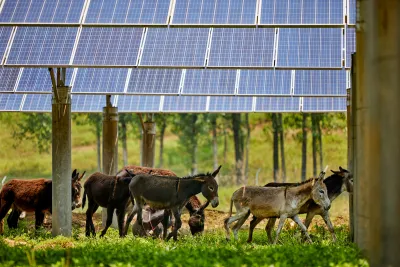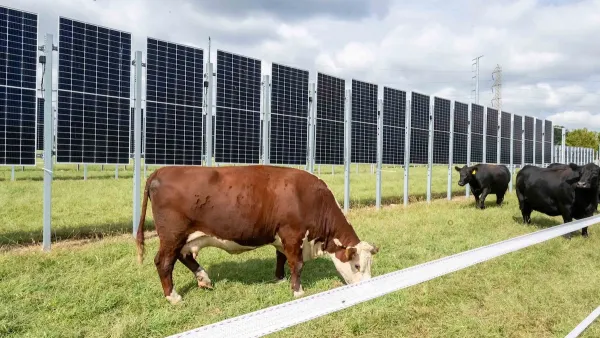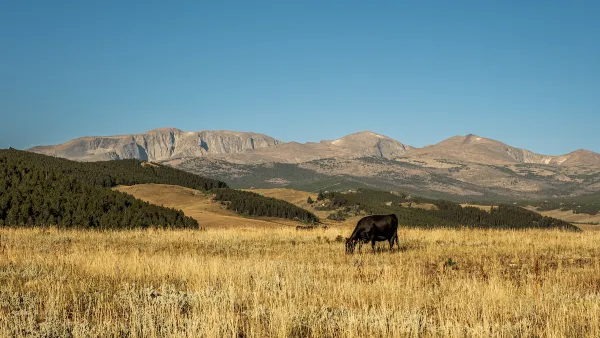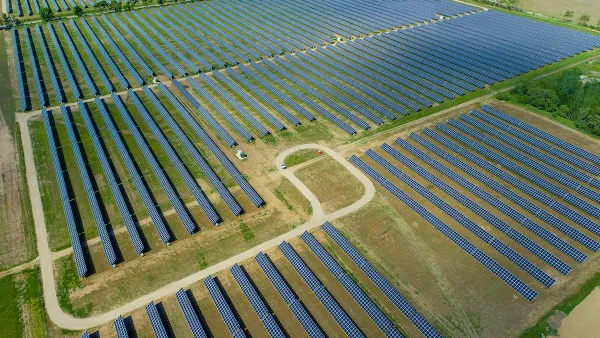How an ‘ecovoltaic’ approach can balance energy production with conservation of sensitive land.

A team of researchers at Colorado State University is looking at ways to lessen the impacts of solar energy production on the environment and reduce conflicts with animal migration, agriculture, ranching, and conservation.
As Matthew Sturchio explains in Honolulu Civil Beat, “A growing alternative to using land solely for solar power generation is called agrivoltaics. As its name suggests, this strategy combines agriculture and solar power on the same piece of land. Agrivoltaic projects can take place on croplands, grazing lands and habitat for agriculturally important pollinators.”
In some of these cases, the shade thrown by solar panels creates micro-environments that benefit different plant communities. “In some cases, mixed conditions like these, with varying levels of light and water, can be a good thing. A well-tested concept in restoration ecology – the science of restoring damaged ecosystems – is that environments with more variety support more diverse mixes of plants and animals.”
Sturchio notes that the location of power transmission lines and ease of access to them also frequently dictate where solar projects can be placed. “New transmission projects that ease this geographic constraint could provide more options. With greater flexibility in choosing sites, developers could shift away from highly sensitive natural ecosystems and install solar arrays on abandoned, water-limited or otherwise degraded lands instead.”
FULL STORY: Solar Power Takes Up A Lot Of Land. Here’s How It Can Be More Ecologically Beneficial

National Parks Layoffs Will Cause Communities to Lose Billions
Thousands of essential park workers were laid off this week, just before the busy spring break season.

Retro-silient?: America’s First “Eco-burb,” The Woodlands Turns 50
A master-planned community north of Houston offers lessons on green infrastructure and resilient design, but falls short of its founder’s lofty affordability and walkability goals.

Delivering for America Plan Will Downgrade Mail Service in at Least 49.5 Percent of Zip Codes
Republican and Democrat lawmakers criticize the plan for its disproportionate negative impact on rural communities.

Test News Post 1
This is a summary

Test News Headline 46
Test for the image on the front page.

Balancing Bombs and Butterflies: How the National Guard Protects a Rare Species
The National Guard at Fort Indiantown Gap uses GIS technology and land management strategies to balance military training with conservation efforts, ensuring the survival of the rare eastern regal fritillary butterfly.
Urban Design for Planners 1: Software Tools
This six-course series explores essential urban design concepts using open source software and equips planners with the tools they need to participate fully in the urban design process.
Planning for Universal Design
Learn the tools for implementing Universal Design in planning regulations.
EMC Planning Group, Inc.
Planetizen
Planetizen
Mpact (formerly Rail~Volution)
Great Falls Development Authority, Inc.
HUDs Office of Policy Development and Research
NYU Wagner Graduate School of Public Service





























